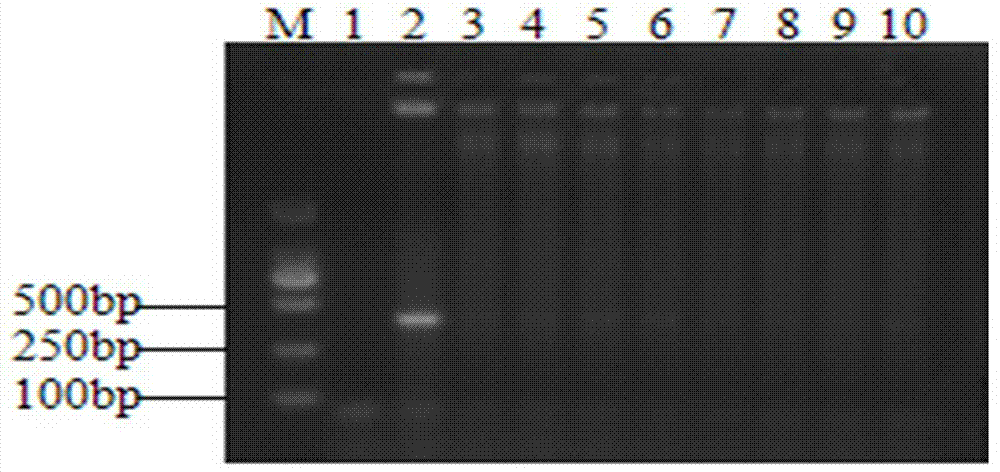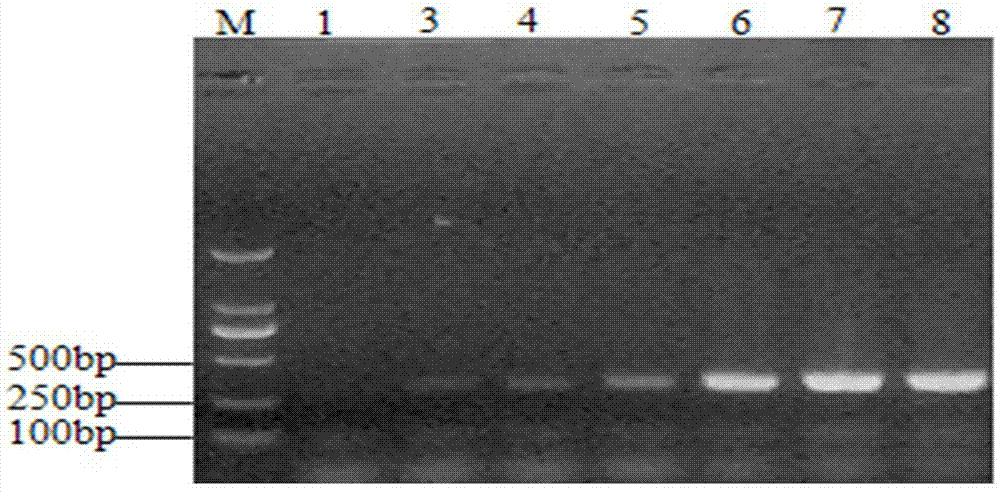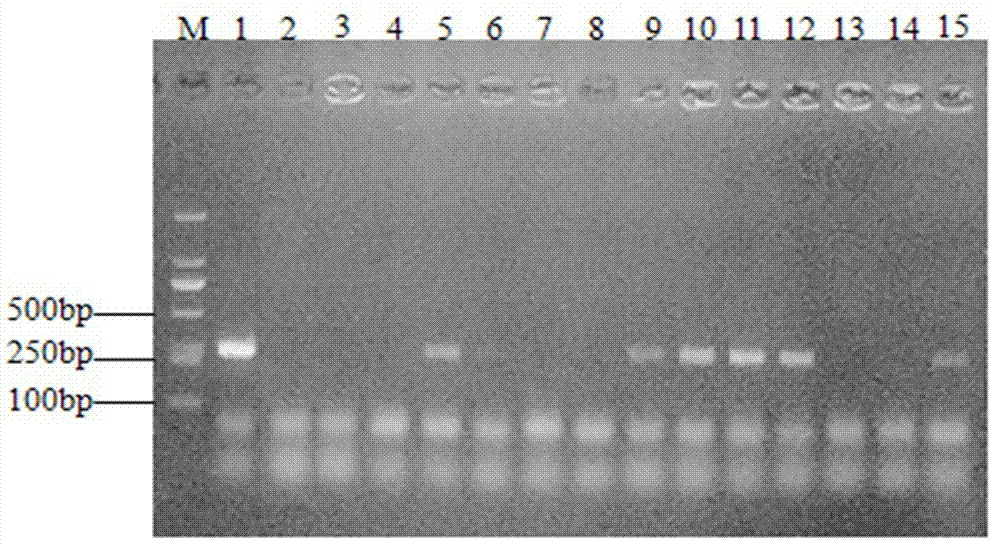Enterobacter cloacae specific PCR (polymerase chain reaction) detection primer
A technology for the detection of Enterobacter cloacae and primers, which is applied in the determination/inspection of microorganisms, biochemical equipment and methods, DNA/RNA fragments, etc., and can solve the problems related to nucleic acid and primers related to the PCR detection method of Enterobacter cloacae that have not yet been invented. Achieve the effect of strong practicability, short time and specific detection results
- Summary
- Abstract
- Description
- Claims
- Application Information
AI Technical Summary
Problems solved by technology
Method used
Image
Examples
Embodiment 4
[0039] Example 4: Detection of suspected clinical strains
[0040] The 13 suspected strains isolated from the larvae of Macrobrachium rosenbergii were detected by using the specific PCR detection method for Enterobacter cloacae established in Example 1. See the test results image 3 , lane M in the figure is the DL2000 molecular weight standard, lane 1 is the positive control of Enterobacter cloacae, lane 2 is the negative control whose template is sterilized double distilled water, and lanes 3-15 are 13 suspected strains. As can be seen in the figure, 6 strains including Nos. 5, 9, 10, 11, 12, and 15 were positive.
[0041] It should be understood that those skilled in the art can make improvements or changes based on the above description, and all these improvements and changes should fall within the protection scope of the appended claims of the present invention.
[0042] Zhejiang Freshwater Fisheries Research Institute
[0043]
[0044] A specific PCR detection prim...
PUM
 Login to View More
Login to View More Abstract
Description
Claims
Application Information
 Login to View More
Login to View More - R&D
- Intellectual Property
- Life Sciences
- Materials
- Tech Scout
- Unparalleled Data Quality
- Higher Quality Content
- 60% Fewer Hallucinations
Browse by: Latest US Patents, China's latest patents, Technical Efficacy Thesaurus, Application Domain, Technology Topic, Popular Technical Reports.
© 2025 PatSnap. All rights reserved.Legal|Privacy policy|Modern Slavery Act Transparency Statement|Sitemap|About US| Contact US: help@patsnap.com



